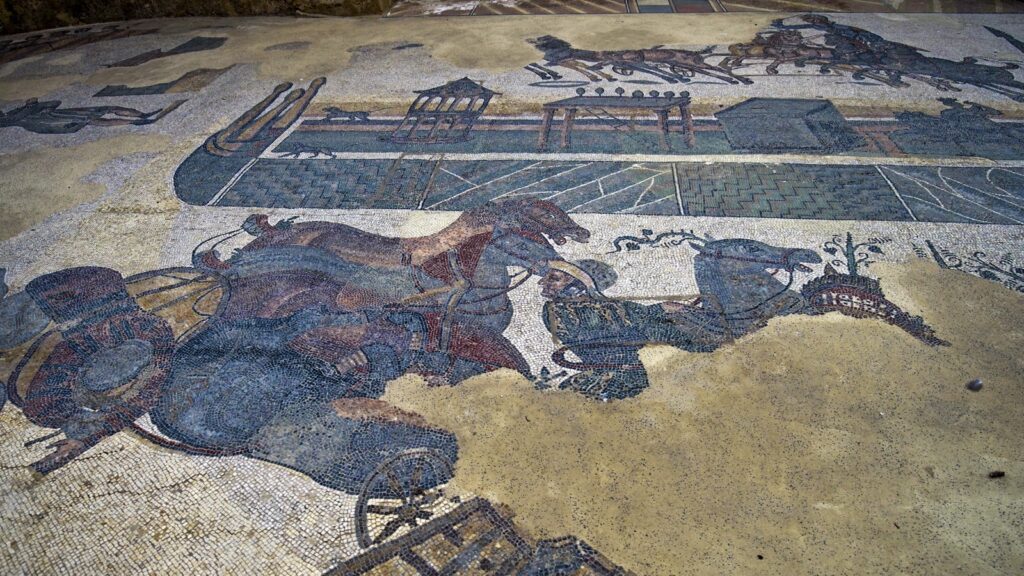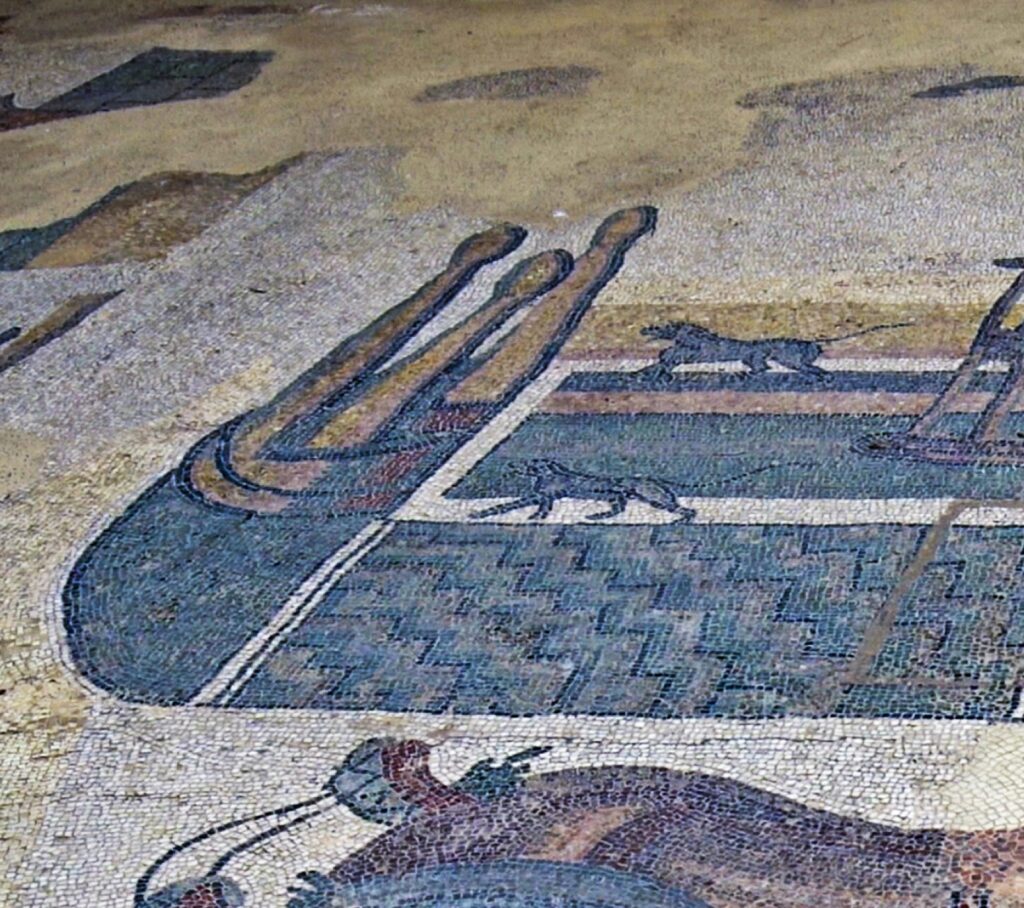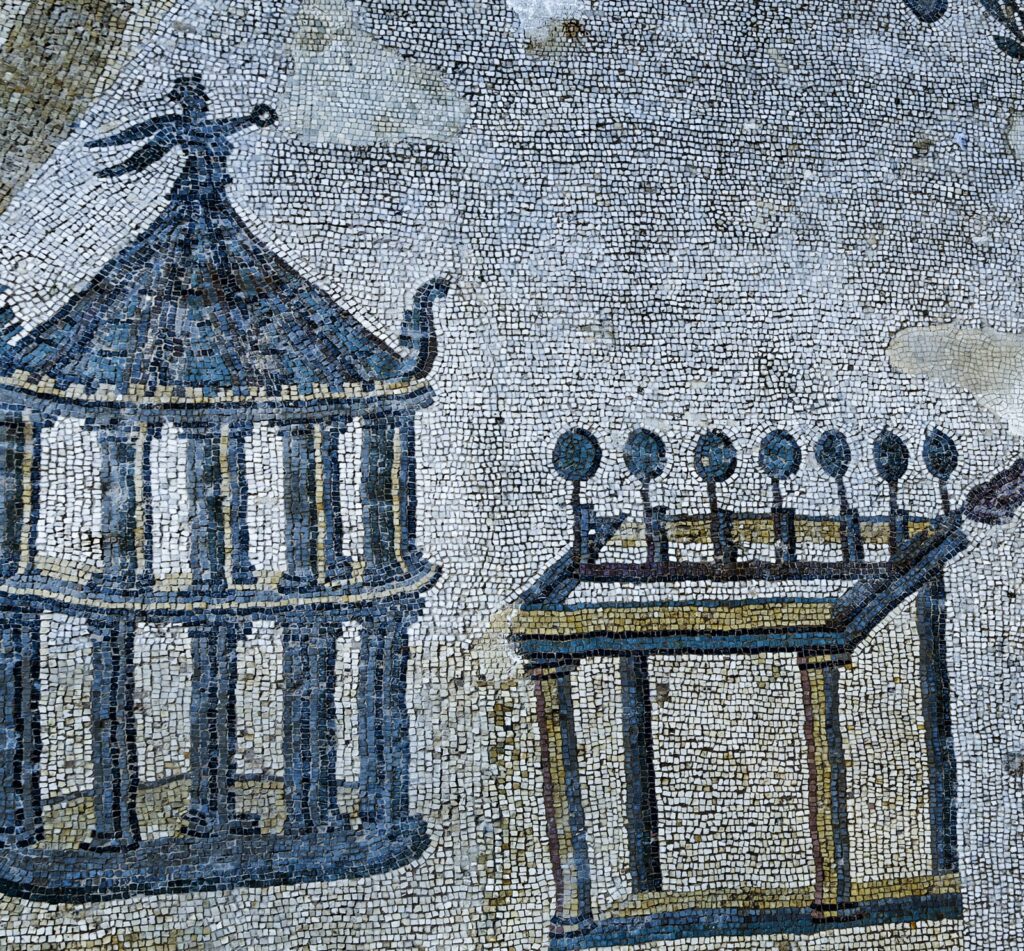
The racing field of the Circus Maximus was divided lengthwise by the spina, a narrow basement embellished over time with statues, fountains, columns and obelisks, which ended in two semicircular elements, the metae,  to indicate the points where the chariots had to turn during the seven laps of the race.
to indicate the points where the chariots had to turn during the seven laps of the race.
In 174 BC, the laps were calculated by the presence of seven large eggs,  first in wood then in marble, each of which was lowered after each lap.
first in wood then in marble, each of which was lowered after each lap.
Later, in 33 BC, Agrippa introduced a double count of laps by adding seven bronze dolphins.